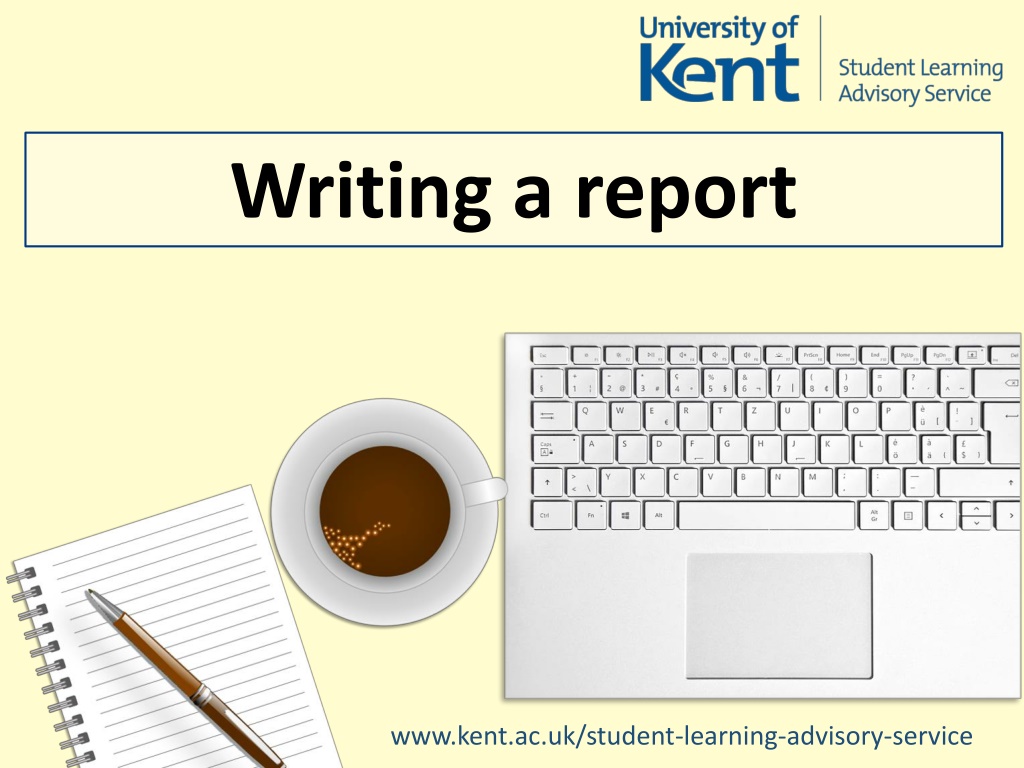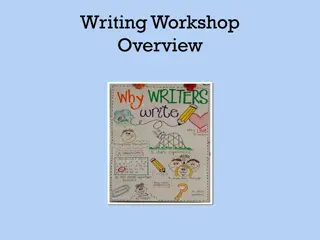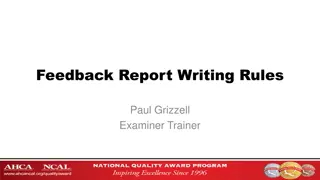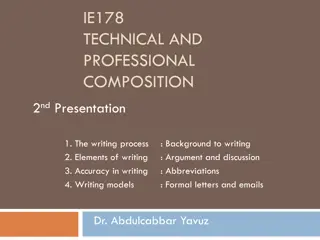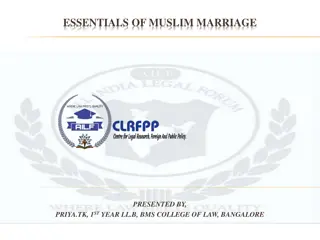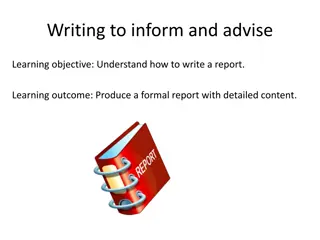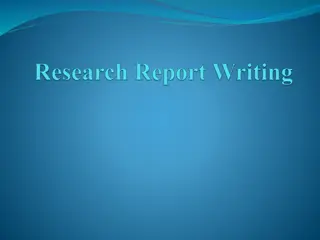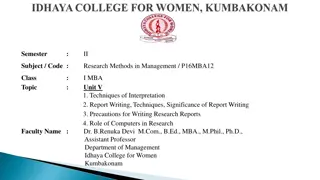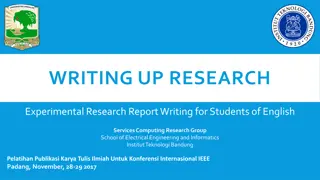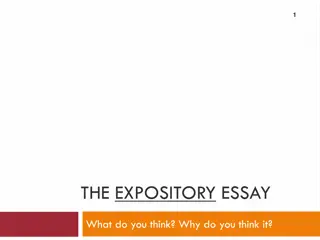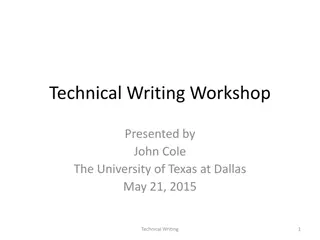Understanding the Essentials of Report Writing
A report is a practical document that informs, analyzes, and guides decision-making. This comprehensive guide explores the definition, types, differences from essays, purposes, and structure of reports to help students develop effective report writing skills.
Download Presentation

Please find below an Image/Link to download the presentation.
The content on the website is provided AS IS for your information and personal use only. It may not be sold, licensed, or shared on other websites without obtaining consent from the author. Download presentation by click this link. If you encounter any issues during the download, it is possible that the publisher has removed the file from their server.
E N D
Presentation Transcript
Writing a report www.kent.ac.uk/student-learning-advisory-service
What is a report? What is a report? A report is a practical document that describes, details or analyses a situation so that the reader can make decisions or take specific action.
Types of report Types of report Product report Business report Lab report Technical report Case study report Research report (inc. dissertations) and more
Reports vs essays Reports vs essays Similarities include: Requirement for research, planning and clear structure Critical analysis of evidence used to support points Accurate referencing of all sources Succinct, formal, objective, academic language Editing and proof-reading prior to submission Guidance on these and other general academic skills you will need to write a report (or an essay) from reading and note-taking to paragraph writing, editing and referencing can be obtained via the SLAS web pages http://www.kent.ac.uk/student-learning-advisory-service
Reports vs essays Reports vs essays Differences a report is: More formally structured (like a dissertation, it may have contents page, numbered sections, headings and sub-headings) Focused on reader s needs (targeted towards a specific purpose) Informative and fact based (as opposed to exploring arguments and ideas) Includes recommendation for action May use tables, graphs, bullet points
Purposes of reports Purposes of reports Do not start work on a report until you clarify its purpose, which may be one or more of the following: Informative To define or establish a current situation Explanatory To explore and explain a situation and suggest possible actions Persuasive To investigate a problem and suggest a specific course of action
Structure (essay) Structure (essay) This is the structure of a standard essay: Paragraph Question Paragraph Introduction Paragraph Main body Paragraph Conclusion Paragraph Reference list Paragraph
Structure (report) Structure (report) A report may contain many or all of the following: Title Acknowledgements Introduction Executive summary Background information Contents page Methodology Main body Findings Bibliography Analysis Appendices Conclusions Recommendations
Clear Clear overall overall structure structure Title (accurately reflecting the content of the report) Acknowledgements (if there are people or organisations you need to acknowledge as having contributed to the creation of the report) Executive summary (Also known as an abstract - a brief, 200-300 word, standalone summary of the report, including background, key aims, methods, findings and conclusions) Contents page Main body (see next slide) Bibliography (for substantial reports at Masters and Phd level, a bibliography may reference sources influential to the work, in addition to work cited within it) Appendices (useful but supplementary information)
Clear Clear main body main body structure structure Introduction (context, focus, aims, objectives of the report) Background information (anything the reader may need to know at the start in order to understand the content of the report) (In a dissertation a Literature Review may go here) Methodology (how you found things out) Findings (what you found out) Analysis (understanding the findings, discussing what they mean) Conclusions (key things those findings indicate, clarify or confirm) Recommendations (Courses of action suggested by those findings)
Clear signposting Clear signposting 4. Government Controlled Banks 4.1 State Bank of India 4.2 Punjab National Bank 5. Private Sector Banks 5.1 ICICI Bank 5.2 HDFC Bank 6. Foreign Banks 6.1 Citibank 6.2 Standard Chartered
Clear information Clear information Before After Before After Figure 1: Uranium Production 2015 Others Figure 1: Uranium Production 2015 Namibia 8% 6% 6%3% 1% Australia 9% Canada 38% 9% 38% 1% 10% 2% 1% 10% USA 29% Canada S.Africa Gabon France USA 29% Argentina Australia Namibia Niger Others S. Africa
Summary Summary key characteristics key characteristics To recap, a report should: Perform a function, clarified at the outset Provide information in a logical, well sign-posted order Present ideas and information (whether written or visual) as clearly as possible Use critically analysed evidence to support conclusions Offer clear recommendations as requested Be accurately referenced and error-free on submission
Further resources Further resources For guidance on the broader range of skills needed to write a report - from writing introductions and critical analysis to editing and referencing - please go to the SLAS webpages http://www.kent.ac.uk/student-learning-advisory-service where you can: Book a one-to-one appointment with a SLAS adviser Attend a range of Online Bitesize Skills Development sessions
Get in touch Get in touch SLAS CONNECT To book an appointment: www.kent.ac.uk/student-learning-advisory-service learning@kent.ac.uk SLASkent KentUniSLAS SLASkent
